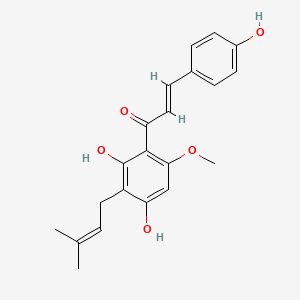
|
Xanthohumol |
Xanthohumol is a lipid of Polyketides (PK) class. Xanthohumol is associated with abnormalities such as Endometriosis, site unspecified, Cyst, peritoneal lesion, Proliferative inflammation and furuncle. The involved functions are known as Cell Proliferation, Signal Transduction, Pathologic Neovascularization, Adverse effects and Proliferation (morphologic abnormality). Xanthohumol often locates in peritoneal, Mesentery, Membrane, Tissue specimen from uterus and Cell Nucleus. The associated genes with Xanthohumol are PI3 gene, KEAP1 gene, SLC33A1 gene, BCR-ABL Fusion Gene and BIRC5 gene. The related lipids are Fatty Acids and Palmitates. The related experimental models are Knock-out. |
465 |
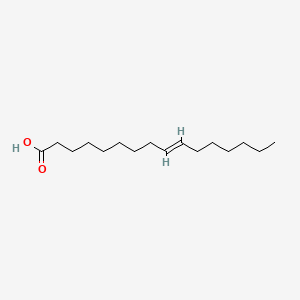
|
trans-9-palmitoleic acid |
Trans-9-palmitoleic acid is a lipid of Fatty Acyls (FA) class. |
468 |
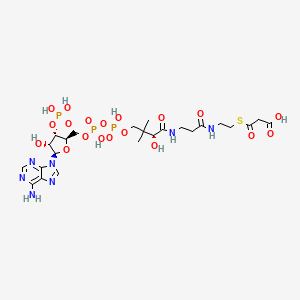
|
Malonyl-coa |
|
492 |
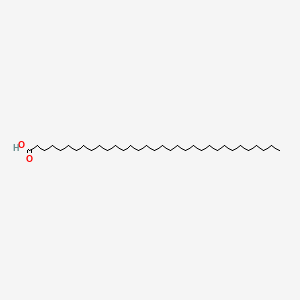
|
tritriacontanoic acid |
tritriacontanoic acid is a lipid of Fatty Acyls (FA) class. Tritriacontanoic acid is associated with abnormalities such as hypercholesterolemia, Metabolic syndrome, Diabetes Mellitus, Non-Insulin-Dependent, Diabetes Mellitus, Insulin-Dependent and Parkinson Disease. The involved functions are known as Fermentation, Process, Longterm Effects, Pressure- physical agent and Lipid Metabolism. Tritriacontanoic acid often locates in Blood, Tissue fiber and A Fibers. The associated genes with tritriacontanoic acid are STN gene. The related lipids are Total cholesterol and blood lipid. |
501 |
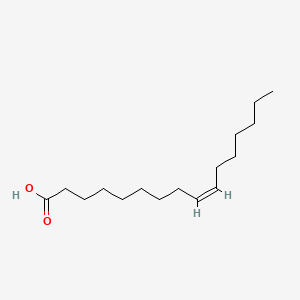
|
cis-9-palmitoleic acid |
Cis-9-palmitoleic acid is a lipid of Fatty Acyls (FA) class. |
694 |

|
PE(15:0/20:0) |
PE(15:0/20:0) is a lipid of Glycerophospholipids (GP) class. Pe(15:0/20:0) is associated with abnormalities such as Exanthema, Infection, Painful Bladder Syndrome, Obesity and Fatty Liver. The involved functions are known as conjugation, Transcription, Genetic, Sinking, Autophagy and Protein Biosynthesis. Pe(15:0/20:0) often locates in membrane fraction, soluble, Membrane, Body tissue and Tissue membrane. The associated genes with PE(15:0/20:0) are GABARAPL2 gene, ATG10 gene, ATG12 gene, SLC33A1 gene and GABARAP gene. The related lipids are Liposomes, Lipopolysaccharides, Phosphatidylserines, Membrane Lipids and Cardiolipins. The related experimental models are Knock-out and Cancer Model. |
723 |
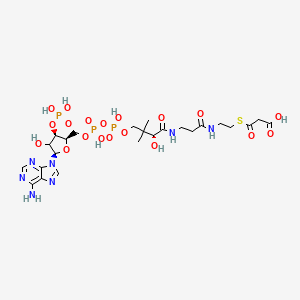
|
Lmfa07050031 |
Lmfa07050031 is a lipid of Fatty Acyls (FA) class. The involved functions are known as Pigment and Polymerization. The related lipids are Propionate. |
787 |
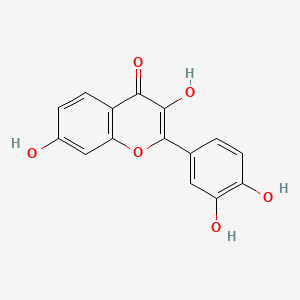
|
Fisetin |
Fisetin is a lipid of Polyketides (PK) class. Fisetin is associated with abnormalities such as Morphologically altered structure, PARKINSON DISEASE, LATE-ONSET, Tetanus, CNS disorder and Disintegration (morphologic abnormality). The involved functions are known as Autophagy, Apoptosis, Energy Metabolism, Acceleration and Anabolism. Fisetin often locates in Mitochondria, Cytoplasmic matrix, Extracellular, Cytoskeletal Filaments and Autophagic vacuole. The associated genes with Fisetin are SIRT1 gene, MAP1LC3A gene, TP53 gene, P4HTM gene and AURKB gene. The related lipids are Phosphatidylserines and Lipopolysaccharides. The related experimental models are Animal Cancer Model, Xenograft Model, Mouse Model, Cancer Model and Disease model. |
832 |
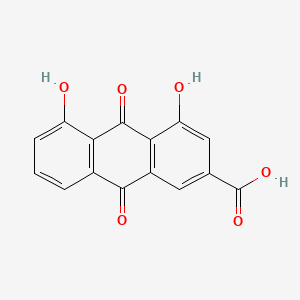
|
Rhein |
Rhein is a lipid of Polyketides (PK) class. Rhein is associated with abnormalities such as Obesity, Non-alcoholic Fatty Liver Disease, Dyslipidemias, Fatty Liver and Degenerative polyarthritis. The involved functions are known as Adipogenesis, Insulin Resistance, luciferase activity, Transcription, Genetic and Inflammation. Rhein often locates in Hepatic, Brown Fat, Muscle, Mouse Liver and Mitochondria. The associated genes with Rhein are QRSL1 gene, Candidate Disease Gene, CFB gene, STAT6 gene and GATA3 gene. The related lipids are Fatty Acids. |
986 |
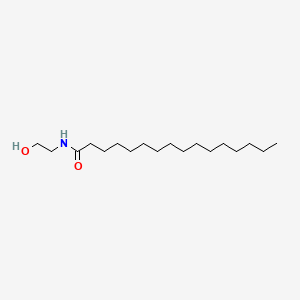
|
Palmitoyl-EA |
Palmitoyl-ea is a lipid of Fatty Acyls (FA) class. The involved functions are known as Cytokinesis of the fertilized ovum and phosphatase activity. The related lipids are stearic acid. |
1001 |









